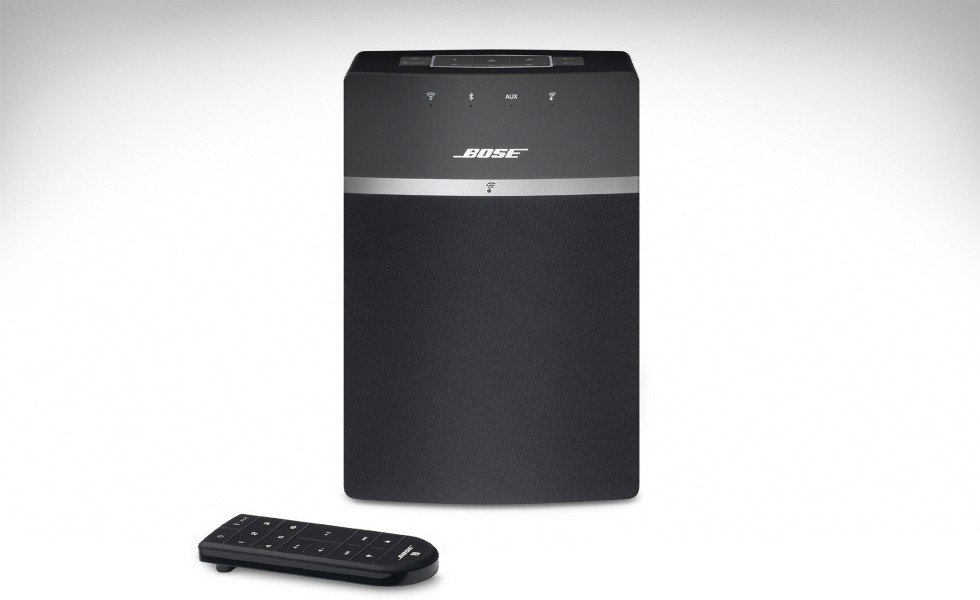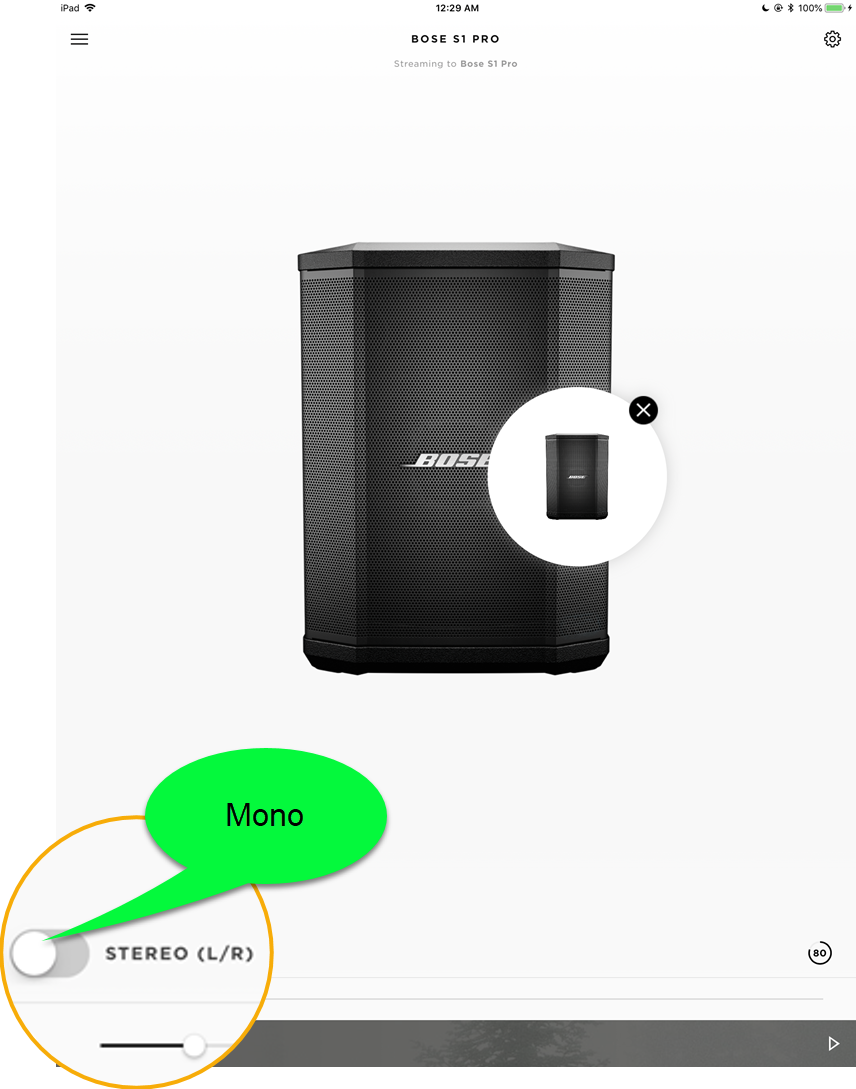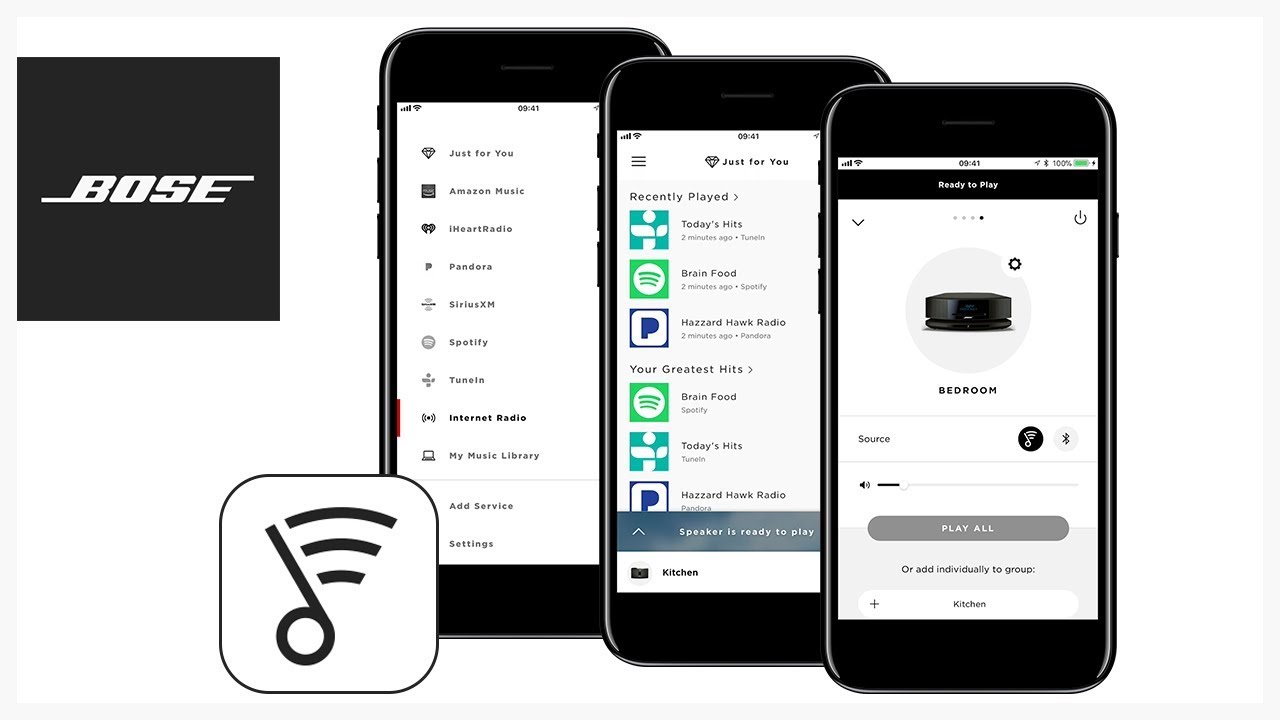To pair and connect to a Mac® computer, follow these steps:
Bose Music for PC-Windows 7,8,10 and Mac APK 1.1.1 Free Entertainment Apps for Android - The Bose Music app lets you easily browse and control your favorite music from one or many of the new Bose. As mentioned above, all Bose SoundTouch devices are compatible with AirPlay. That means you could play Apple music on Bose SoundTouch speakers via AirPlay feature. Check the below steps to learn how to play Apple music on Bose SoundTouch speakers via AirPlay easily: 1. Go to Settings AirPlay on your iOS devices.
Make sure your Mac® computer is not currently paired to any other Bluetooth® audio device(s). If the computer has a Mac-branded Bluetooth® keyboard and mouse, they do not need to be disconnected. To clear previously paired devices on the Mac®, see Removing paired devices on a Mac®
With the SoundLink® speaker turned on, press and hold the Bluetooth® button on the speaker for five seconds. The Bluetooth® indicator will slowly fade on and off approximately once every second. The SoundLink® speaker will remain in this state for 20 minutes, or until a Bluetooth® connection is made

With your Mac® turned on, click the Apple® icon (menu) in the upper left-hand corner of the screen
In the Apple® menu, choose 'System Preferences...'
Under the Internet & Wireless section, click on the Bluetooth® icon
In the Bluetooth® menu, search for Bluetooth® devices by clicking on the 'Set up new device' button, or the '+' button in the bottom left-hand corner of the screen
On the Bluetooth® Setup Assistant screen, choose 'Bose SoundLink Wireless mobile speaker' and then click 'CONTINUE.' If the computer asks for a password, use '0000'
After the pairing has completed successfully, click 'Quit'
In the Bluetooth® menu, click the 'Advanced…' button. If the Bluetooth® menu screen is not already visible, follow steps 3 to 5
Depending on the OS version, select 'Accept Incoming audio requests,' or unselect 'Reject incoming audio requests,' and then click 'OK'
In the Bluetooth® menu, click the back button in the upper left-hand corner. This will bring you back to the system preferences menu
Under the hardware section, click on the 'SOUND' icon
In the Sound menu, click on the 'Output' tab and choose 'Bose® SoundLink® Wireless Mobile speaker' as your sound output device
Click the red button(x) in the upper left-hand corner to close out of the Sound menu screen
Play an audio source (i.e. iTunes®) to finalise the Bluetooth® connection. This step is especially important on OS 10.7.x and above
Bluetooth is a standard for connecting wireless devices together, and various accessories use it, such as keyboards, mice, headphones, fitness trackers, smartwatches, and many more. It is an essential technology that the majority of people use daily, and by eliminating the need for cords, it gives freedom fo movement.

If you love listening to music, audiobooks, or podcasts on your macbook, but hate that the cord blocks your way while you are typing, then Bluetooth headphones are a great way to get rid of it. They aren’t hard to connect to your macbook. So in this article, we are going to connect bose headphones to macbook, macbook air, and macbook pro.
Removing Paired Devices on a Macbook Air/Pro
Before connecting a bose headphone to your macbook system, ensure that your Mac system isn’t currently paired to any Bluetooth audio device. If the computer features a Mac branded Bluetooth mouse or keyboard, you don’t need to disconnect them.
Bose Speaker App For Macbook Pro
If there is any paired device on your Mac system, you can remove them by below instructions;
To remove paired devices on your macbook system, follow these steps;
- Turn on your macbook system and click on the apple icon located at the left corner of the screen.
- In the menu option, select System Preferences
- Below the Internet and Wireless option, click the Bluetooth icon
- Select a device from the left column, and click the “-“ option to remove the device from the list
- Click on the Remove option to finalize the removal of the selected device.


Connecting Bose Headphones to Macbook Air/Pro
After all the devices are removed from the paired list of your macbook system, now you are ready to connect your bose headphone to your macbook computer. To pairing and connecting a bose headphone to your macbook computer, you need to follow the below steps;
- While the SoundLink speaker is on, press and hold the Bluetooth button for five to ten seconds. By doing this, the Bluetooth indicator will fade on and off once every second, and it will remain like this for about twenty minutes until a Bluetooth connection is made.
- Turn on your Macbook system, and click on the menu icon located at the left corner.
- In the menu, select System Preferences
- Below the Internet and Wireless option, click on the Bluetooth option.
- In the Bluetooth menu, click on the Setup New Device option or the “+” icon in the left corner to search for new Bluetooth devices.
- When the Bluetooth setup assistant screen pop out, select Bose SoundLink Wireless mobile speaker.
- Click continue.
- If the system asks for a code, enter “0000”.
- After the successful pairing, click the quit option.
- In the Bluetooth menu, select the Advanced option. If the Bluetooth screen is not visible, follow the 3rd to 5th
- Depending on the Operating System version, choose to Accept Incoming Audio Requests, on decline Reject Incoming Audio Requests, and click Ok.
- In the Bluetooth menu, click the Back option located at the left corner of the screen. This process will take you back to the System Preferences section.
- Below the Hardware option, click the Sound icon.
- In the Sound menu, click the Output tab and select Bose SoundLink Wireless mobile speaker as the sound output device.
- Close the Sound menu screen by clicking the red button “x” located at the left corner of the screen.
- Play an audio file to finish the Bluetooth connection.
- This setup is essential for the Operating System 10.7.x and the latest.
Get Bose Music App
Conclusion
Bose was the first to introduce active noise-canceling to consumers and is still at the top fo the list. The United States firm has won a string fo awards for its noise-canceling headphones.
The noise-canceling headphones are a must for travelers, and if you want highly effective noise-canceling in a travel-friendly design, then bose headphones deliver. Bose has stretched its range of the noise-canceling headphones that suit every budget.
Whether you’re looking to shut out the world, and want to listen to your favorite music or hit your fitness goals, it is a fair bet that Bose has a pair of headphones appropriate to your requirements.
The latest models offer rechargeable batteries, wireless connectivity, and voice-assisted features. However, they don’t be put off by the more affordable, previous models with still outstanding sound quality and noise-canceling smarts. There are Bose bargains to be had.
FAQ
Below are some most asked questions by multiple users;
Q: Do Bose headphones work with Mac?
Ans: Turn on the Bose headphones and ensure you press the on the button to the 3rd position, and you should hear the headphones something, such as ready to pair. Navigate to System Preferences to your macbook and go to the Bluetooth option. You should see the bose device on the list.
Q: Is there any Bose connect app for macbook?
Ans: Yes, to improve your experience with the bose connect app is compatible with almost all Android and Apple devices. You can easily pair your device with your bose headphones.
Q: Should I try a Bose connect app?
Ans: You don’t really need a Bose connect app, but you may want to experience it if you have another compatible device.

Q: Why do you need a Bose connect app?
Ans: The bose app isn’t required to use the company headphones, but it offers features, such as simplified switching between already paired devices that would be impossible through the usual Bluetooth pairing.

Comments are closed.